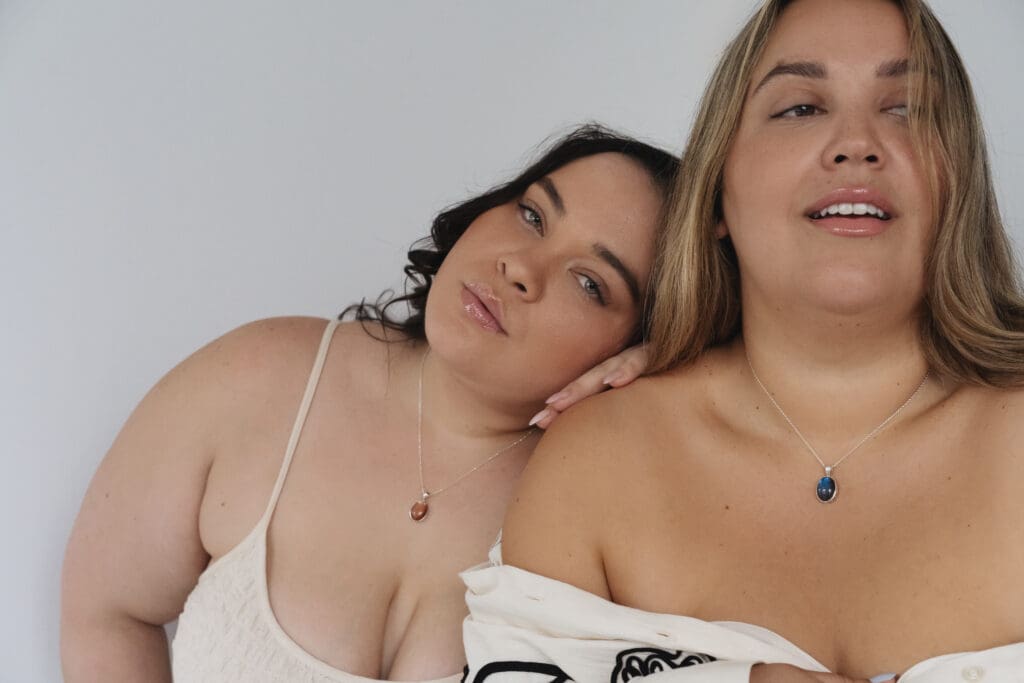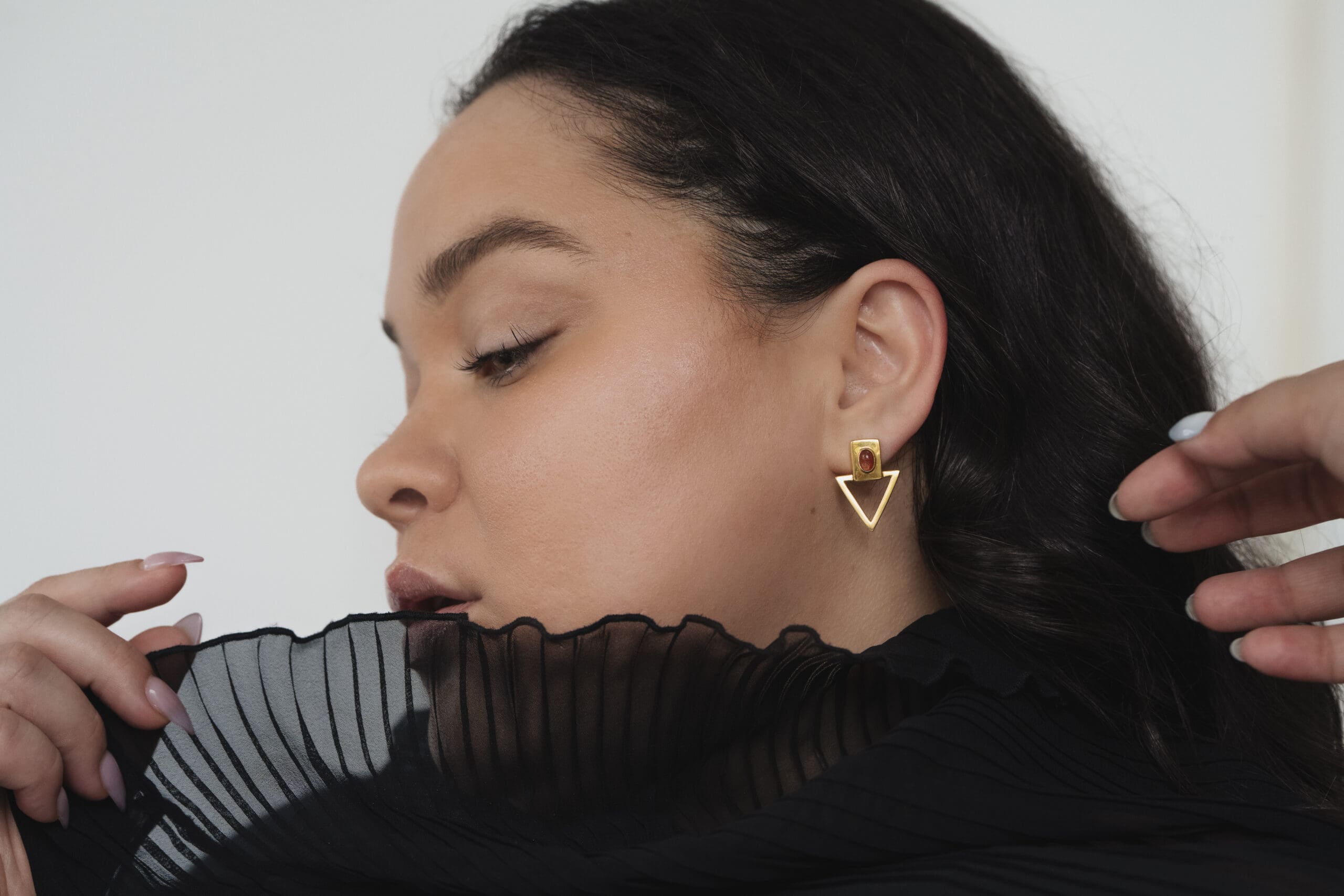While the term “plus-size” has become part of the fashion vernacular for clothes, the category—and the associated inclusive sizing that comes with it—remains largely absent from accessories. “It can be tough to find modern, trend-focused pieces of jewelry with longer-length necklaces, more ring sizes and bracelets of varying length,” confirms Lydia Okello, a Vancouver-based content creator at @styleisstyle, writer and model.

Instead of offering a selection of extended sizes, many jewelry brands stick close to the “standard” sizing widely used within the industry, Okello says. A quick online search of ring sizes yields charts boasting a range of sizes spanning three to 13.5, yet women’s rings are often only offered in a small selection of sizes ranging from five to seven. “I don’t think plus-size customers are often thought of in this realm, unfortunately,” explains Okello, attributing the omission to “fat-phobic notions” of the “ideal” jewelry shoppers. “If the industry were open to size expansion—whether that’s a custom option, limited run or part of the main line—I do think there is a wide customer base waiting for companies like this.”
While many mainstream jewelry brands continue to ignore sizes on both ends of the “standard” spectrum, up-and-coming independent brands are stepping in to fill the void. “I don’t think the fashion industry, as a whole, is considerate, but there are definitely little pockets of the industry finally seeing the light and value in creating more size-inclusive options,” Connie Hackett, a B.C.-based content creator and marketing professional, says. “Something that feels like a niche market at this point is such a large part of the population that the fashion industry is truly missing out on.”
With a ring size of 11, Hackett says her experience shopping for the perfect piece is “mostly dismal. … For years I’ve lived my life just simply living without certain accessories or jewelry because it wasn’t readily available to me. It’s only after seeing more retailers, mostly through Instagram and TikTok, creating these options that I’ve realized how much I’ve missed out on. And that makes me incredibly sad. [But] it also makes me excited about all the accessories I’m going to finally enjoy as the industry, slowly, improves.”
This frustration and feeling of missing out is one that small brands like Vancouver-based brand Zaleska, Wolf Circus and Foe & Dear aim to ease by offering size-inclusive jewelry designs, including a broader range of ring sizes and custom-cut necklace chains. “Zaleska Jewelry is what jewelry dreams are made of. Everything is thoughtfully designed, made by hand and size inclusive,” Hackett says. “It’s so nice having a shopping experience that doesn’t feel like an ‘othering’ experience. There is such a wide variety of sizes that I know I’ll be able to recommend this brand to everyone in my life, both those who require extended sizing and those who don’t.”
That feeling of inclusivity—of finding jewelry that is, finally, a perfect fit—is what inspired founder Sylvia Tennant to create the brand in the first place. “I started designing jewelry because I couldn’t find rings that fit my fingers,” she says. “Options simply did not exist in the price point and sizing that I needed. I wanted to create a brand that said, ‘Hi! I see you like fashion. You are welcome and considered as a consumer here.’”
Tennant points to two main barriers facing jewelry makers when it comes to creating size-inclusive jewelry pieces: a bigger investment in scaling the designs to fit more sizes, and a need to carry more inventory to meet more shoppers’ size needs. “We want someone with a size four finger and a size 15 finger to have the same customer experience wearing our jewelry, and that requires three separate carvings and masters for each design,” she explains. “I imagine it’s often a resource issue, but it may also be due to the fact that this is not the lived experience of their owners or designers. Unless you’ve struggled with an issue, you might have no idea that it exists. We all have our blind spots.”
The size-inclusive conversation doesn’t end with jewelry. “I wish more bag-makers would make varied lengths for straps,” Okello says, pointing to the brand Baggu as one that recently increased the length of all their crossbody bag straps this year while also offering strap extenders for older designs. “Strap length is something I’ve personally had issues with, so I was excited to see a brand as large as Baggu take this step. I would love to see more things like this.”
Kendall Barber, co-founder of the Canadian footwear brand Poppy Barley, is, too, taking steps to change the standards of inclusivity for shoes. “We started Poppy Barley to create a better-fitting shoe,” Barber says. “Stepping into the right size—length and width—plays a big role in comfort. Being size inclusive is part of Poppy Barley’s DNA. It’s who we are as a company and as women.” Citing increased costs and complexity of design—“every additional half size or different width requires a new shoe last, new sole, new insole, new pattern and additional fit testing”—as well as a decreased market due to the fact that sizes six to 10 typically fit “80 to 90 per cent of women’s shoe purchases,” she says the brand won’t back down when it comes to ensuring at least a few styles in the range include sizes five to 12 and medium as well as wide widths.
“Customers are enthusiastic about our expanded size offering, especially those that have very few options,” Barber says, adding that, while she’s hopeful more brands follow suit with extended footwear sizing, at this point, she’s not overly optimistic. “Advances in shoe-industry technology will continue to remove barriers and reduce costs to produce additional sizes, however, inclusive sizing is still a niche.”
As for what brands can do to increase their accessories offering for all, Okello suggests taking the step to create the pieces first—and then making sure people know they’re there. “Please market to plus-size folks!” Okello says. “Show the items on plus models, reach out to plus-size influencers and make sure you seek out that market.” —Aleesha Harris

Be the first to comment